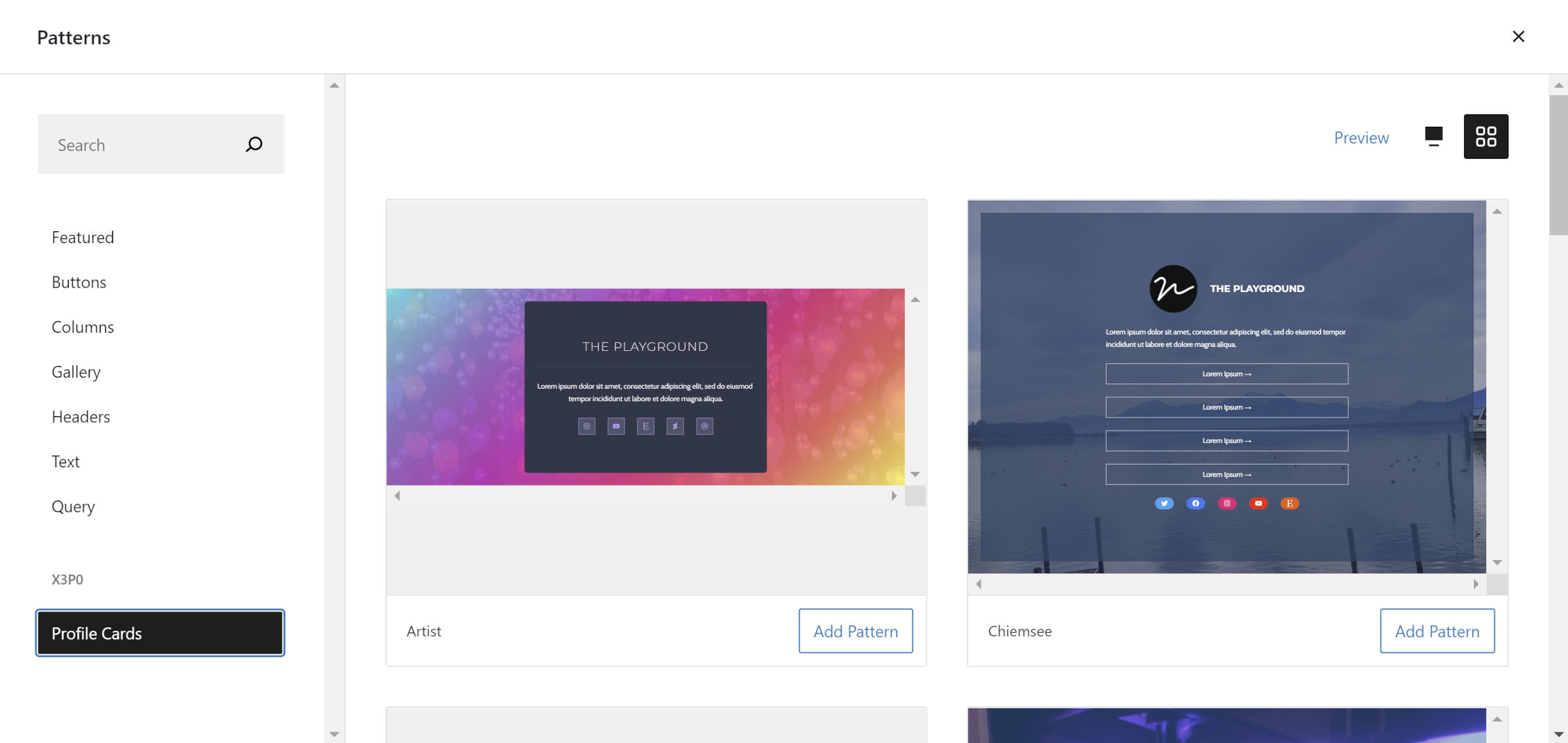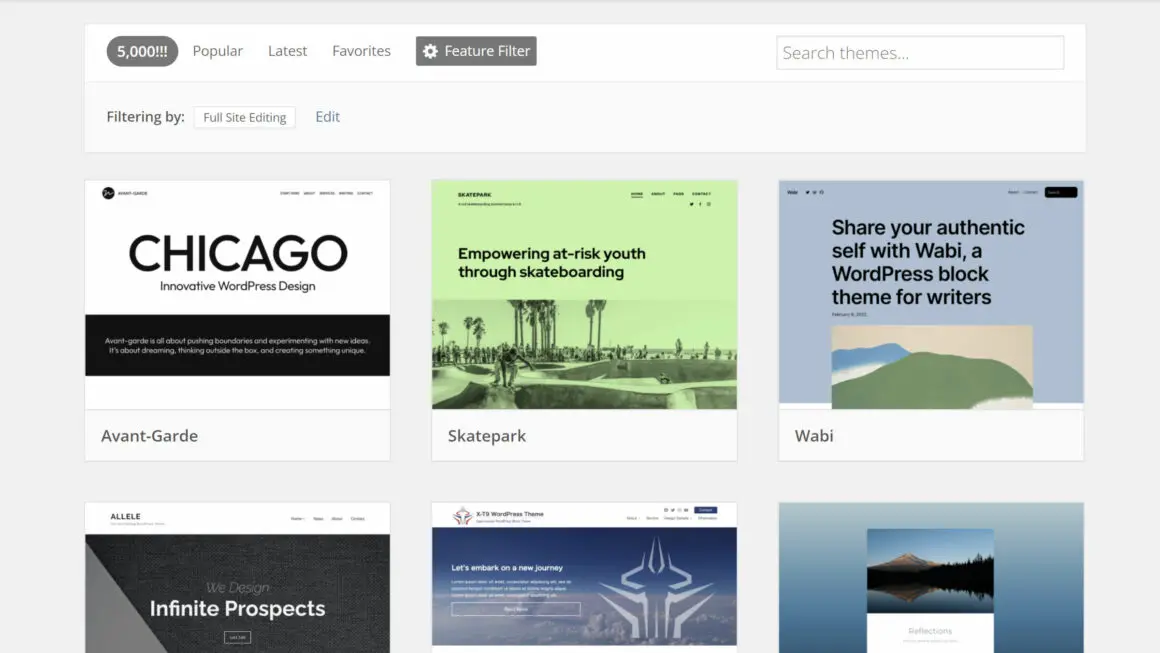“I have so many design ideas in my head that I am about to make it my mission to singlehandedly fulfill [Matt Mullenweg’s] vision of 5,000 Full Site Editing #WordPress themes in the directory,” tweeted Brian Gardner earlier today.
Daniel Schutzsmith responded:
I’m just not seeing the need for more than one theme for FSE as long as I can override the look of it.
Would appreciate someone explaining why one theme like @frostwp COULDN’T just be the standard.
Making more themes feels like it defeats the concept of FSE altogether.
It is not the first time someone asked whether more than one block theme is necessary. In 2019, Rich Tabor proposed adding a base theme to WordPress itself, one upon which others would be built, if at all.
Even that was not the first time someone had pondered similar one-theme utopias throughout the platform’s history. Many framework-style parent themes have all made a run for it.
Let us assume for a moment that WordPress has reached a state where all themes no longer need custom PHP and CSS code. We are nowhere near that point yet, but we can imagine such a day might be possible in the relatively distant future. In this ideal world, templating, styling, theme-supported features, and plugin integration are neatly packaged into something configurable from the admin. In practice, users could control any aspect of their site’s front-end through the interface.
The problem is that someone still needs to make those customizations, and not everyone has a knack for design. One person’s ability does not automatically translate to all other users.
Perhaps a more crucial point is that not everyone wants to customize their site’s design. Some people simply want to find something that suits their style and move along.
There are alternative routes for arriving at the same destination, but themes are currently the only reliable vehicle.
Schutzsmith tweeted the following in response to Jamie Marsland, who likened the notion to asking Picasso for the canvas instead of the finished painting:
Themes and swapping out the whole thing is an old way of thinking. Sure a theme could = painting but I’m saying why can’t we just swap out the theme.json and get the same result? Why the need for themes at all when all we need to change is theme.json.
That is a future that I would not mind striving for. It is not insurmountable, but there is an uphill climb that WordPress will undoubtedly struggle with. Without a standardized CSS toolkit in place, switching theme.json files simply does not work. If WordPress tackles that problem, it takes us one step closer.
But theme.json only represents settings and styles. It says nothing about the structure of a website. Pre-configured templates are still necessary. Right now, that job sits squarely on top of the theme author’s shoulders.
If and when a well-designed user experience for full-page patterns lands in WordPress (related ticket), the template argument becomes less relevant. With such a system in place and enough variety from the pattern directory, some users might not require themes to handle this.
The only worthwhile argument I have for multiple — even 1,000s of — themes is the promise they make to the user: install this thing, and you get this result.
For example, a pizzeria owner installs WordPress on their site and begins looking for a design for their online presence. This is likely someone working all day in a hot kitchen and comes home exhausted at night. However, they hop on the computer to update tomorrow’s specials or tinker with a new homepage layout for a few minutes. Everything about that experience should be catered to their use case. As an owner, chef, spouse, and parent, they need to quickly get things done and spend the rest of the night with their family.
This and 1,000s of similar scenarios are why themes are as important today as they ever were. Not everyone has the privilege of time, the skillset, or the inclination to piece their sites together.
When done well, block themes offer a controlled experience that cuts out all the cruft. They feel like they were built for an audience of one while being flexible enough for public release.
Schutzsmith later tweeted in the thread that he liked Elementor’s Kits. These are predesigned website designs that span multiple industries.
Pattern category types, which are not currently in WordPress, could evolve into that role. The Block Pattern Explorer plugin enables the feature, but themes must add support for the types to appear.
In the following screenshot, I have created a “Profile Cards” type in a theme of mine, but it could be industry-specific:
 Block pattern category types.
Block pattern category types.It should be as easy as locating an industry-specific type and finding patterns for the pizzeria owner. A theme can offer that by either packaging patterns or pointing to those hosted in the directory.
I could see this evolving into more of a kit-like solution.
I disagree with Schutzsmith’s conclusion of needing only a single theme but not the questions he is asking. Our design community cannot simply say that themes should be “this one thing” because that is what they have always been. Its members need to continually ask: What is a WordPress theme?
The answer may be different to various groups of creators and users. If someone can get everything they need from the pattern directory without switching from Twenty Twenty-Two, maybe themes are irrelevant. If a creator simply likes building global style variations (theme.json files), WordPress should make it easy to use them on a wide range of sites.
However, many users will still need turnkey design solutions, and themes can be the best way to facilitate that. I do not know if that is 100, 1,000 or 5,000, but we will see how it goes.
Category: Opinion, Themes
Keep reading the article at WP Tavern. The article was originally written by Justin Tadlock on 2022-03-11 22:57:37.
The article was hand-picked and curated for you by the Editorial Team of WP Archives.
